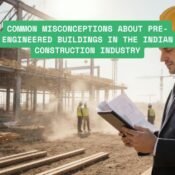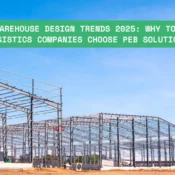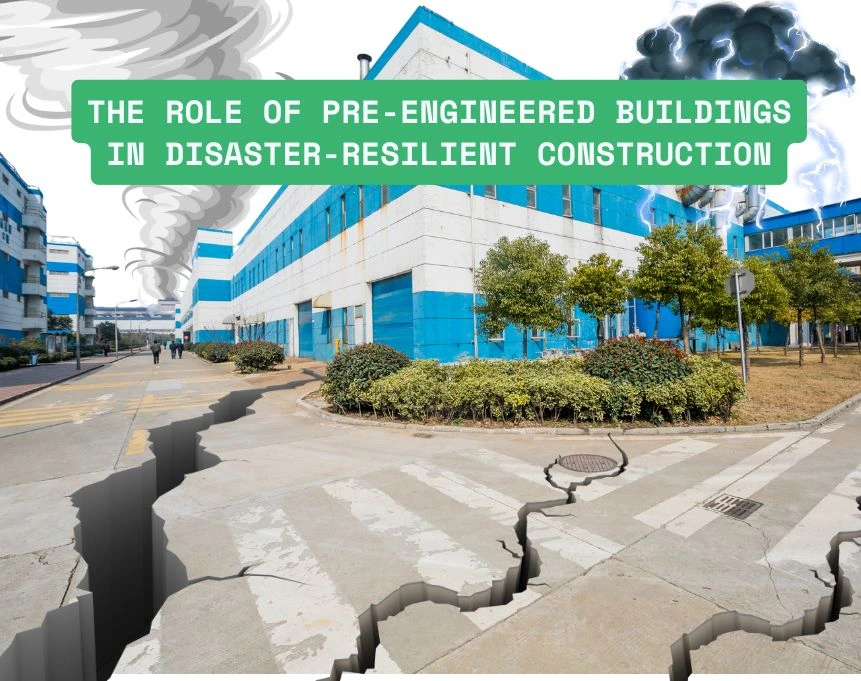
Role of Pre-Engineered Buildings in Disaster-Proof Construction
Introduction
In recent years, India has faced a growing number of natural disasters—earthquakes, cyclones, floods, and extreme heatwaves. These unpredictable events cause widespread damage, displace communities, and cripple industries. In such a context, the construction sector plays a critical role in ensuring safety, continuity, and resilience.
One solution that is rapidly gaining recognition is pre-engineered buildings (PEBs). Traditionally known for their speed and affordability, PEBs are now being embraced as a practical and reliable approach to disaster-resilient construction.
Thanks to innovations in structural engineering and materials science, today’s PEBs can be designed to withstand earthquakes, high winds, and other natural forces—while still offering faster timelines and lower costs. In this guide, we’ll explore how PEB safety features support disaster resilience, and why they’re becoming essential in building future-ready infrastructure.
From earthquake-resistant structures to hurricane-proof buildings, discover how pre-engineered solutions are changing the way we build for safety.
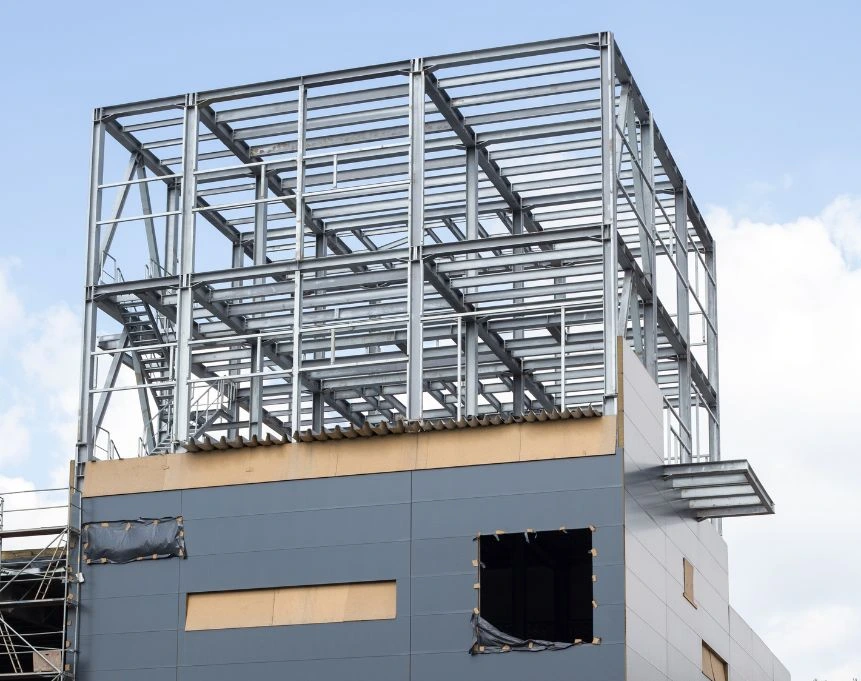
1. Understanding Disaster-Resilient Construction
Disaster-resilient construction refers to the practice of designing and building structures that can resist and recover from natural calamities with minimal damage. The goal is not just survival, but also operational continuity.
It involves:
- Structural integrity against earthquakes, storms, and floods
- Material resilience to temperature shifts, fire, and corrosion
- Design flexibility for evacuation, retrofitting, or expansion
- Use of predictive engineering based on local hazard zones
With climate risks on the rise, investing in disaster-ready buildings isn’t optional—it’s essential.
2. Why Pre-Engineered Buildings Are Ideal for Resilience
Pre-engineered buildings are factory-fabricated and precision-engineered using high-strength steel, making them a natural fit for resilient infrastructure. Here’s why:
- Custom-engineered for local hazards: Designs can be optimized for seismic zones, cyclone-prone areas, or floodplains.
- High strength-to-weight ratio: Steel structures are both strong and flexible—ideal for absorbing shocks.
- Quick deployment: PEBs can be constructed quickly, useful for emergency shelters or post-disaster rebuilding.
- Minimal on-site vulnerability: Shorter site timelines mean fewer weather-related delays or incidents during construction.
These qualities make PEBs a reliable ally in the push for disaster-resilient construction.
3. Core PEB Safety Features in Disaster Zones
PEBs incorporate several safety-first design features to enhance performance during disasters:
- Wind bracings to stabilize against lateral forces
- Anchor bolts for deep-foundation stability
- Seismic base isolators to absorb earthquake shocks
- Roof slope optimization to prevent water accumulation
- Modular design for easy repair and reassembly
Each element of a PEB can be tailored to suit the disaster profile of the location, contributing to comprehensive PEB safety and long-term reliability.
4. Earthquake-Resistant Structures with Steel Framing
India is divided into four seismic zones, with zones III and IV (e.g., Delhi, Guwahati, Srinagar) being at higher risk. In such regions, earthquake-resistant structures are mandatory for public and industrial safety.
PEBs excel in these zones because:
- Steel has ductile properties, which means it can bend without breaking.
- Light-weight structures create less seismic force.
- Braced frames and cross members dissipate energy efficiently.
- Joints and connections are engineered for flexibility, not brittleness.
Compared to brittle materials like concrete, steel buildings can endure quakes with significantly less structural damage.
5. Hurricane-Proof Buildings: Wind Load and Design
High-speed winds during cyclones and hurricanes can be devastating, especially along India’s coastal belt. Hurricane-proof buildings need advanced wind-load analysis and aerodynamic design.
Here’s how PEBs meet the mark:
- Structural frames are designed for wind speeds up to 250 km/h, based on IS codes.
- Roofing systems include screw-down or standing seam profiles that resist uplift.
- Wall cladding and anchoring systems are tested for shear resistance.
- Tapered columns and side bracing stabilize the structure under gust pressure.
When built to specification, PEBs can withstand some of the harshest wind conditions seen in India.
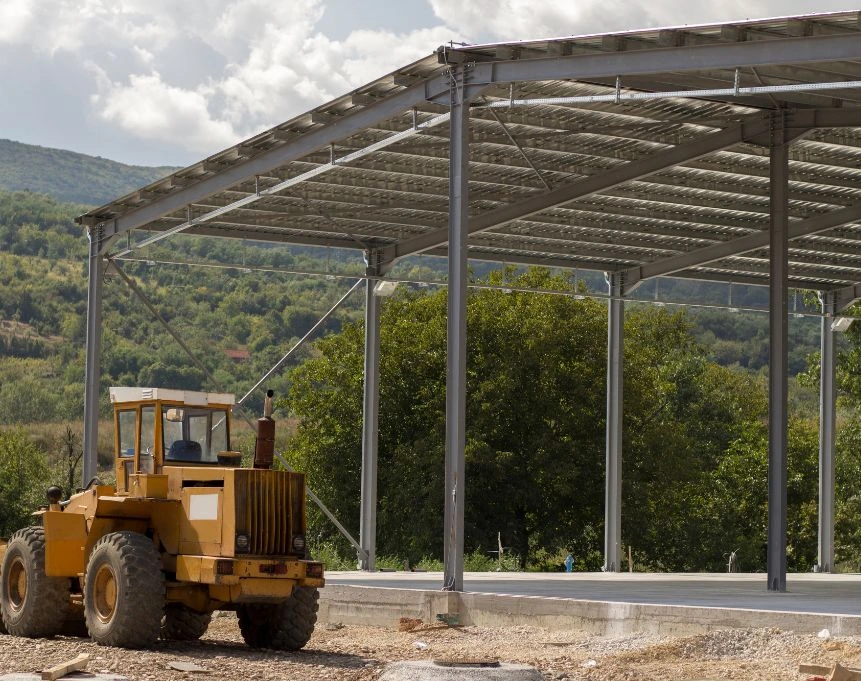
6. The Durability Advantage: PEBs in Harsh Conditions
Disaster resilience isn't just about withstanding a one-time event, it’s also about lasting strength. This is where PEB durability shines:
- Corrosion-resistant coatings (e.g., zinc or paint) protect steel in humid or salty climates.
- Galvalume or galvanized steel panels add to roof longevity.
- Thermal insulation reduces damage from temperature swings and helps prevent condensation.
- Fire-retardant materials can be integrated into insulation or internal finishes.
With routine maintenance, these buildings can last for 30–50 years, even in extreme environments.
7. Fast Recovery and Continuity with PEBs
Post-disaster recovery is as important as the resistance itself. PEBs are invaluable here:
- Modular systems allow damaged components to be replaced without dismantling the entire structure.
- Fast reassembly means businesses or institutions can resume operations quickly.
- Government shelters or relief centers can be set up in a matter of weeks.
- Schools, hospitals, and warehouses can be rebuilt swiftly after calamities.
This ability to bounce back quickly is what makes PEBs a critical part of continuity planning.
8. Building Codes and Compliance in India
To ensure safety and performance, PEBs must comply with the following Indian standards:
- IS 800 – General Construction in Steel
- IS 875 (Part 3) – Wind Loads
- IS 1893 – Seismic Design
- NBC 2016 – National Building Code
- Local fire, flood, and zoning regulations
At Metal Tree, all our PEBs are designed in strict compliance with these codes, ensuring our clients get the highest level of PEB safety and durability—no matter the project location.
"At Metal Tree, we engineer more than buildings—we engineer resilience. Our pre-engineered solutions are designed to withstand disasters, protect lives, and keep businesses moving."
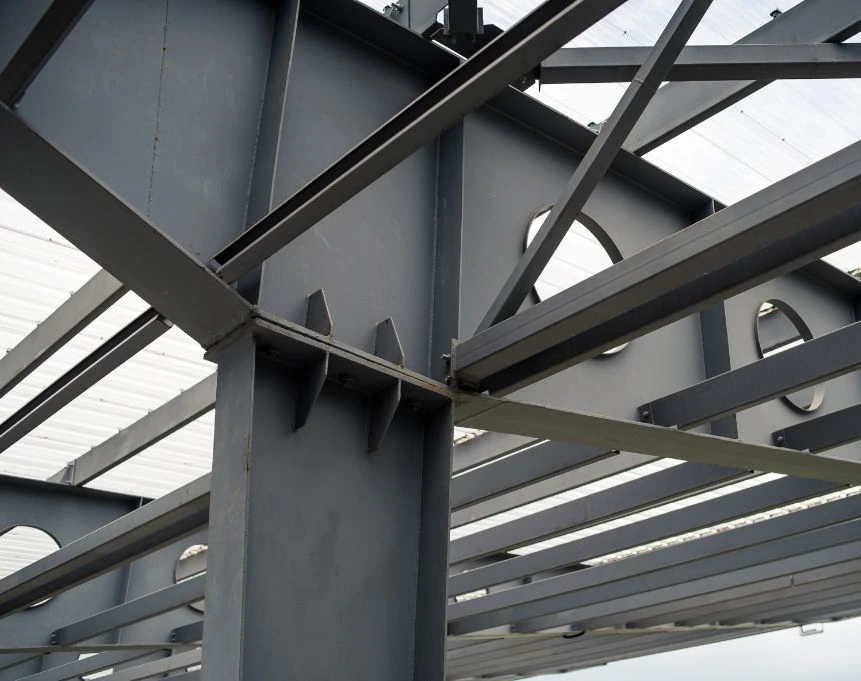
9. Conclusion
The need for disaster-resilient construction is no longer a matter of policy, it’s a matter of survival. Whether you're building a factory in a seismic zone or a warehouse in a cyclone-prone district, investing in pre-engineered buildings gives you a robust, tested, and proven solution.
By offering flexibility, speed, and enhanced safety features, PEBs stand out as a superior alternative to traditional construction methods. The future of building resiliently in India rests firmly on the steel backbone of PEB durability and safety.
Want to protect your infrastructure against natural disasters?
Metal Tree offers customized PEB solutions that are engineered for resilience, reliability, and rapid recovery.
10. FAQs
1. Are pre-engineered buildings suitable for disaster-prone zones?
Yes. PEBs can be customized to meet local wind, seismic, and climate requirements, making them ideal for disaster resilience.
2. How do PEBs perform in earthquakes?
Steel’s flexibility allows it to absorb seismic energy better than brittle materials, reducing the risk of structural failure.
3. Can PEBs withstand high wind or cyclones?
Absolutely. Properly designed PEBs can resist wind speeds exceeding 200 km/h with suitable bracing and anchoring.
4. Are PEBs more durable than concrete in disaster-prone areas?
In many cases, yes. Steel buildings offer quicker recovery, modular replacement, and less long-term damage in harsh conditions.
5. What is the lifespan of a disaster-resilient PEB?
With proper maintenance, PEBs can last 30–50 years or more, even in challenging environments.
Follow us on:
All Categories
Recent Posts
How Much Does a Pre-Engineered Building Cost in India? Ultimate Price Guide
Tags
Call Us at
+91 9311624628


